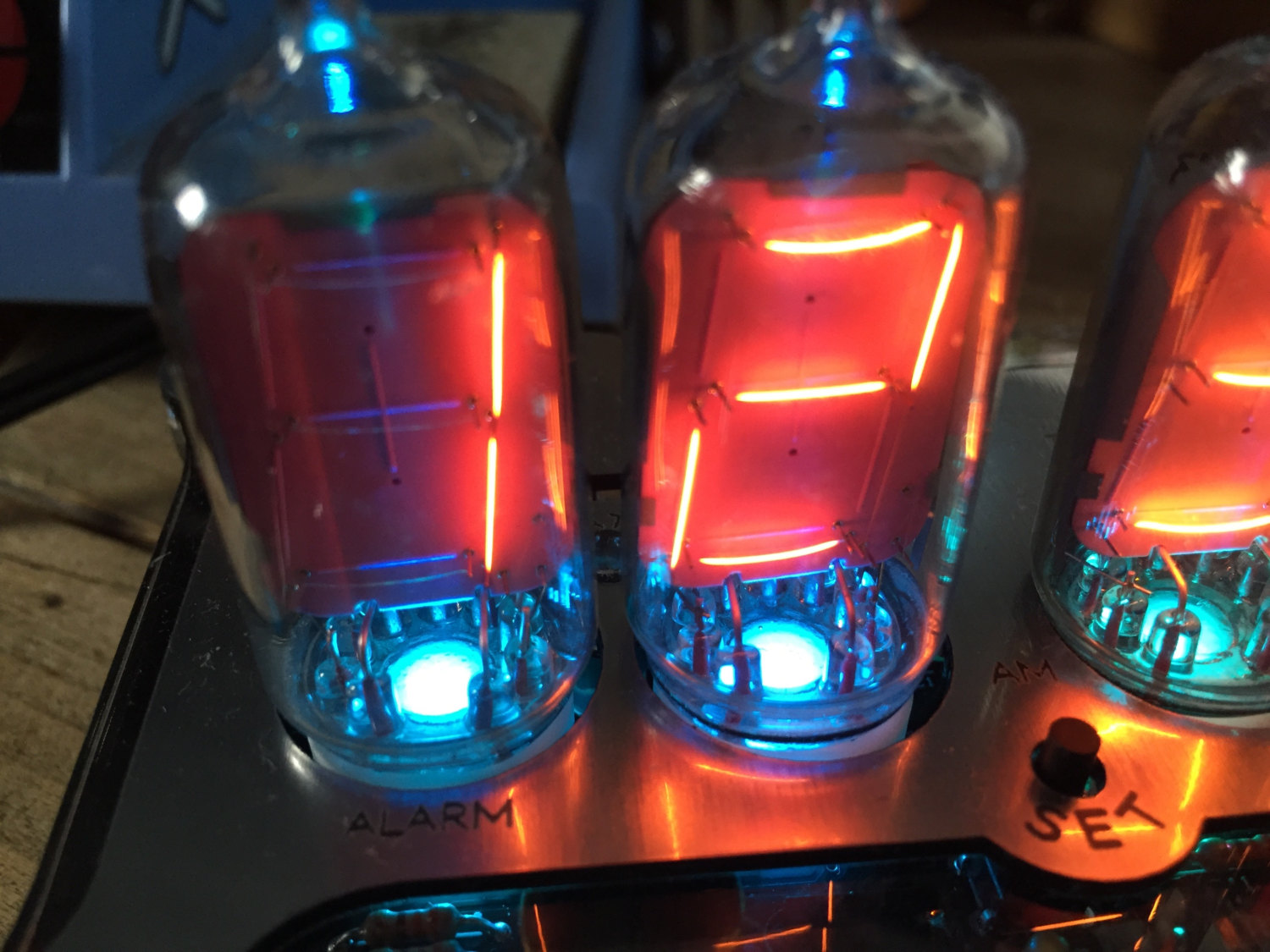
A Numitron is a type of display device that utilizes eight filaments to represent numerical digits and symbols. Specifically, seven of these filaments are arranged to form the segments of numerals, similar to a seven-segment display, while the eighth filament is dedicated to the decimal point. All of these filaments are enclosed within a typical glass tube body, giving the Numitron a classic and aesthetically pleasing appearance reminiscent of vintage electronics. In effect, it can be seen as an eight-way incandescent globe, where each filament functions like a miniature light bulb, illuminating to display the desired character or symbol. This design not only provides a warm, incandescent glow but also contributes to the durability and longevity of the device, as incandescent filaments are known for their robustness compared to other display technologies.
One of the significant advantages of using a Numitron over the more popular Nixie tube is its low voltage requirement. Nixie tubes require a high control voltage of about 170VDC to operate, which necessitates specialized power supplies and strict safety precautions due to the risk of electric shock. In contrast, Numitrons operate efficiently at very low control voltages, typically around 5VDC. This low voltage requirement simplifies the design of electronic circuits that incorporate Numitrons, making them more accessible for hobbyists and reducing the overall cost and complexity of projects. Additionally, compared to other display technologies like the well-known green or bluish Vacuum Fluorescent Displays (VFDs), which require around 5 VAC and more than 20 VDC, Numitrons offer a more energy-efficient and straightforward alternative. The lower voltage and power consumption not only make them safer to use but also extend the lifespan of the device by reducing thermal stress on the components.
Because of these lower voltage requirements, a Numitron such as the smaller IV-9 model can be directly driven from control counter circuits without the need for additional voltage conversion or amplification stages. This direct compatibility with standard logic-level voltages simplifies the integration of Numitrons into digital systems, allowing for straightforward interfacing with microcontrollers, timers, and other digital circuitry. For this reason, there are already a number of Numitron clocks and other timing devices that utilize the smaller IV-9. These clocks take advantage of the Numitron’s unique visual appeal and ease of use, combining vintage aesthetics with modern electronic functionality. The ability to drive the display directly from control circuits not only reduces component count and cost but also enhances reliability by eliminating potential points of failure associated with more complex driver circuits.
However, using the much larger IV-13 Numitron introduces additional design considerations due to its higher current requirements. Each of the eight segments of the IV-13 draws about 32mA of current, which is significantly higher than what standard logic circuits can source or sink directly. This necessitates a more complex and powerful driver circuit capable of handling the increased current demand. Designers must incorporate components such as transistor arrays, driver ICs, or relay systems to effectively manage the current and ensure proper operation of the display segments. Additionally, considerations for heat dissipation become more critical, as the higher current can lead to increased thermal output. Proper thermal management techniques, such as heat sinks or active cooling, may be required to maintain the longevity and reliability of the device. Despite these challenges, the IV-13’s larger size and brighter display make it an attractive option for applications where visibility and aesthetic impact are important. The extra effort in designing a suitable driver circuit can be justified by the enhanced visual appeal and functionality that the larger Numitron provides, making it a popular choice for custom clocks, instrumentation panels, and artistic displays that seek to capture the charm of vintage technology.

